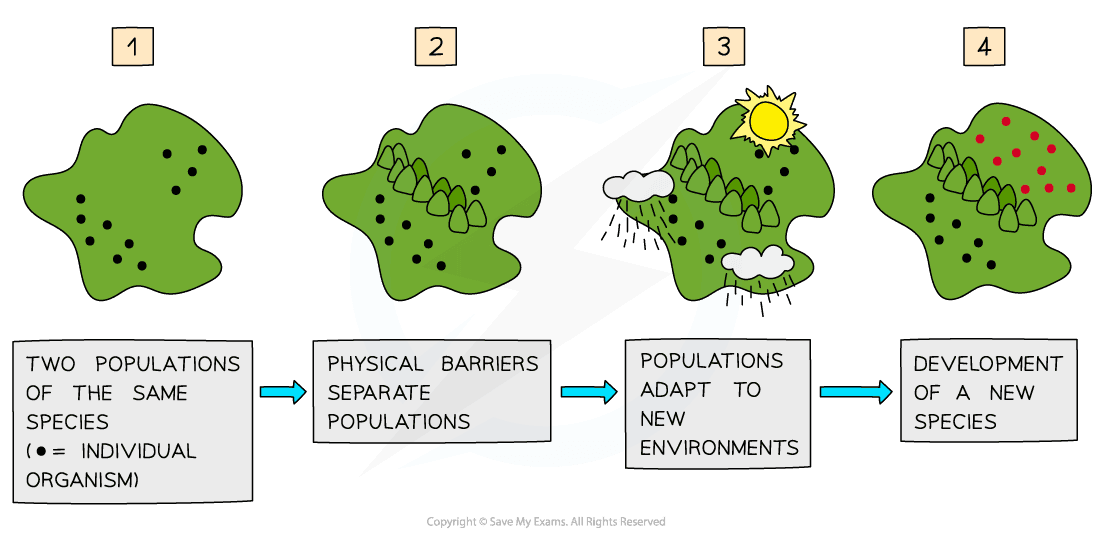The Work of Darwin & Wallace
Charles Robert Darwin
- Charles Darwin spent five years on a voyage around the world on a ship called HMS Beagle
- During the voyage, he studied the plants and animals at all the different locations around the world that the ship visited
- He noticed that there was variation in members of the same species
- He also noted that those individuals with characteristics most suited to their environment were more likely to survive, reproduce and, therefore, pass on their characteristics to their offspring
- To explain his observations, Darwin developed his theory of evolution by natural selection
Alfred Russel Wallace
- Alfred Russel Wallace was a scientist who, after conducting his own travels around the world and gathering much evidence, independently developed his own theory of evolution based on the process of natural selection
- He published scientific papers on this theory with Darwin in 1858 (Darwin published his book, On the Origin of Species, the following year)
- Wallace is best known for:
- His work studying the warning colouration of species (particularly butterflies) and how this must be an example of a beneficial characteristic that had evolved by natural selection, as the warning colouration helps to deter predators
- Developing the theory of speciation
Speciation
- Wallace did much pioneering work on speciation but more evidence over time has led to our current understanding of the theory of speciation
- Speciation is a process that results in the formation of a new species
- When populations of the same species become so different that they are unable to interbreed and produce fertile offspring, they are considered different species and speciation has occurred
- Speciation can occur as a result of a combination of isolation (when populations of the same species become separated) and natural selection:
- Populations of the same species can become isolated from one another due to the formation of a physical barrier (eg. a new river or mountain range) – this is known as geographic isolation
- The environment will be different on either side of this physical barrier (eg. different climates or different food available)
- The environmental differences on either side will provide different selection pressures and natural selection will cause a different set of characteristics to become more common in the two isolated populations
- Over many generations, individuals from the two populations will have become so distinct (genetically, behaviorally, physically) that they will no longer be able to interbreed and produce fertile offspring
- The two populations are now separate species
The process of speciation
The impact of Darwin and Wallace on modern biology
- The theory of evolution by natural selection is still very important to this day and helps modern scientists and biologists to understand many areas of biology
- For example:
- We now know that all life forms (i.e. all species) change through the process of evolution
- We now know that all life forms on the planet today are descended from a common ancestor
- This means all life forms are related to some extent and this knowledge has affected the way we classify species (arrange them into groups), as modern biologists now do this based on how closely related species are to each other
- In terms of conservation (preventing species from going extinct), the theory of evolution by natural selection eventually led to the realisation that conserving the genetic diversity (the variety in the genes) of a species is very important as it helps species to adapt to changing environments. This knowledge has helped guide conservation projects in protecting endangered species


